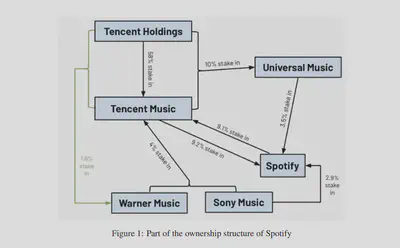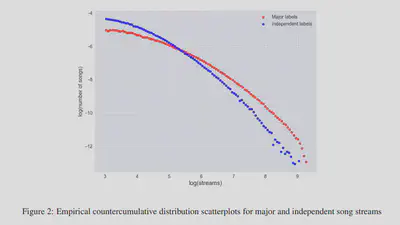Do Independent Labels and Major Record Labels Compete on a Level Playing Field When It Comes to Streaming?
Do Independent Labels and Major Record Labels Compete on a Level Playing Field When It Comes to Streaming? According to the written evidence submitted by Dr. Franco Mariuzzo and Dr. Peter Ormosi to the Economics of music streaming inquiry of the UK Parliament, Digital, Culture, Media, and Sports Committee, the answer is no.
The researchers compared the number of streams for 719 artists represented by the major labels Sony and UMG and 1101 artists represented by independent labels to assess whether similarly popular artists had the same chance to rack up new streams over a period of two weeks.
Applying advanced econometric techniques (you can read their publication before scientific peer-review here), the researchers ensured that the artists being compared met rigorous statistical similarity criteria. The growth prospects of artists represented by Sony and UMG do not appear to be significantly different. However, the researchers found significant differences in growth prospects when comparing artists associated with major and independent labels.

“One possible explanation could be that major label artists feature disproportionately in Spotify generated playlists, which gives them access to distributional channels — and consequently revenue — that indie labels do not have. Our simulation results confirm this explanation.”
Applying a Gibrat’s law on revenue shares, the competition economists show that even if you only listen to your friend’s music in Slovakia or the Netherlands, most of the subscription fee you pay is allocated to artists such as Ed Sheeran or Ariana Grande.

UMG and Sony artitsts gather streams more quickly. The two companies happen to be Spotify shareholders. This research is consistent with the findings of the Centre National de la Musique and Deloitte, which show that the income of certain music genres that major labels invest into —such as rap and Afrobeat — receive about 20% more income than their share in streams at the expense of other genres.

If royalty distribution were proportional to the number of streams by listeners, classical music, hard rock, blues, pop, and rock labels and their artists would get 17–24% revenue per year.
Our own investigation with Listen Local focused on the artists who are never recommended at all and ended up on Forgetify. Our data suggests, but not yet proves, that certain countries of origin have a similar disadvantage. We are building a Music Observatory to continuously share, collect data that can help empirically decide questions in such inquiries. And we’ll join forces with Dr. Mariuzzo and Dr. Ormosi to find it out!